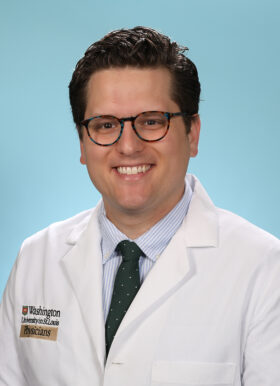Simulation General Information
Simulation (SIM) has been a component of emergency medicine resident education at Washington University School of Medicine (WUSM) for over a decade now. I can still remember struggling through newly learned ACLS algorithms during my own intern orientation years ago. Back in “the day” this was our only real Sim exposure. Fast forward a few years and you now see a very different Sim experience as a WUSM EM resident.
The focus is our recently built Sim Lab housing four high fidelity METI mannequins as well as a task training room. This is complemented by a large conference room that allows for remote viewing of the lab rooms. While many sim labs have a single educational model to their simulation ours is multi-faceted. We run larger group labs roughly every other month during our weekly Tuesday conference. Half of the residents get small group lecture time while the other half comes to the SIM lab. After two hours we swap. This allows for hands-on education in a smaller group than if the entire residency came at the same time wbhile still allowing for a large enough group that you can solve the cases as a collective. It provides a great opportunity for our junior residents to model what they see their seniors doing in the ED but in a friendly safe environment. Along with this are collaborative trauma sessions with our surgery service giving residents time to show their smarts in front of their surgical colleagues.
While these are great labs, the lab residents seem to find most rewarding is the team lab. Here we bring in a single resident with two nurses to work through a case just as they would in the ED. For most residents its their first time taking care of a “patient” with no attending supervision or other residents to lean on. The residents find the challenge and reward of this lab unequalled. Procedure and task-training labs are combined with these structured simulated patient sessions giving resident hands-on time with chest tube insertion, intubation, difficult airway management, lumbar puncture, pediatric procedures, and many more. And finally we offer individually focused labs to meet specific resident needs giving residents one on one time with faculty.
Whether it’s a crash Cesarean section or a critical trauma patient, we try to have you do it in the lab before you have to do it in real-life.
Feel free to direct any SIM questions you may have to me or Dr. Croft.

Ernesto J Romo, MD
Director, Simulation; Department Equity Champion; Assistant Professor, Emergency Medicine
- Phone: 314-362-9916
- Email: eromo@nospam.wustl.edu

Alexander Croft, MD
Director of Simulation; Director of the In-Situ Simulation Acute Care (ISSAC) Program; Assistant Professor, Emergency Medicine
- Email: Acroft@nospam.wustl.edu